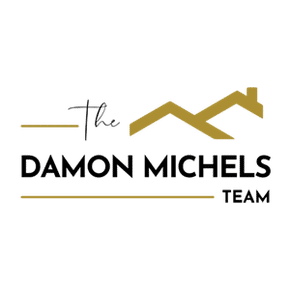Germantown
About Germantown
Germantown is a neighborhood in the northwest section of the city of Philadelphia, Pennsylvania, United States, about 7–8 miles northwest from the center of the city. The neighborhood is rich in historic sites and buildings from the colonial era, a few of which are open to the public. Germantown stretches for about two miles along Germantown Avenue northwest from Windrim and Roberts Avenues. The boundaries of Germantown borough at the time it was absorbed into the city of Philadelphia were Wissahickon Avenue, Roberts Avenue, Wister Street, Stenton Avenue and Washington Lane. Today, the next neighborhood to the northwest, Mount Airy, starts around Johnson Street, although there is no universally recognized exact boundary. Nicetown lies to the south and Logan, Ogontz, and West Oak Lane lie to the east.
History
Germantown was founded by German settlers, thirteen Quaker and Mennonite families from Krefeld (Germany), in 1681. Today the founding day of Germantown on October 6, 1683, is remembered as German-American Day, a holiday in the United States, observed annually on October 6. On August 12, 1689, William Penn at London signed a charter constituting some of the inhabitants a corporation by the name of "the bailiff, burgesses and commonalty of Germantown, in the county of Philadelphia, in the province of Pennsylvania." Francis Daniel Pastorius was the first bailiff. Jacob Telner, Derick Isacks op den Graeff and his brother Abraham Isacks op den Graeff, Reynier Tyson, and Tennis Coender were burgesses, besides six committeemen. They had authority to hold "the general court of the corporation of Germantowne", to make laws for the government of the settlement, and to hold a court of record. This court went into operation in 1690, and continued its services for sixteen years. Sometimes, to distinguish Germantown from the upper portion of German township, outside the borough, the township portion was called Upper Germantown.
In 1688, five years after its founding, Germantown became the birthplace of the anti-slavery movement in America. Pastorius, Gerret Hendericks, Derick Updegraeff and Abraham Updengraef gathered at Thones Kunders's house and wrote a two-page condemnation of slavery and sent it to the governing bodies of their Quaker church, the Society of Friends. The petition was mainly based upon the Bible's Golden Rule, "Do unto others as you would have them do unto you." Though the Quaker establishment took no immediate action, the 1688 Germantown Quaker Petition Against Slavery, was a clear and forceful argument against slavery and initiated the process of banning slavery in the Society of Friends (1776) and Pennsylvania (1780).
When Philadelphia was occupied by the British during the American Revolutionary War, British units were housed in Germantown. In the Battle of Germantown, in 1777, the Continental Army attacked this garrison. During the battle, a party of citizens fired on the British troops, as they marched up the avenue, and mortally wounded British Brigadier General Agnew. The Americans withdrew after firing on one another in the confusion of the battle, leading to the determination that the battle resulted in a defeat of the Americans. However, the battle is sometimes considered a victory by Americans. The American loss was 673 and the British loss was 575, but along with the Army's success under Brigadier General Horatio Gates at Saratoga on October 17 when John Burgoyne surrendered, the battle led to the official recognition of the Americans by France, which formed an alliance with the Americans afterward.
During his presidency, George Washington and his family lodged at the Deshler-Morris House in Germantown to escape the city and the yellow fever epidemic of 1793. The first bank of the United States was also located here during his administration.
Germantown proper, and the adjacent German Township, were incorporated into the City of Philadelphia in 1854 by the Act of Consolidation. Bright April, a 1946 book written and illustrated by Marguerite de Angeli, features scenes of Germantown of the 1940s while addressing the divisive issue of racial prejudice experienced by African Americans, a daring topic for a children's book of that time.
Between 1954 and 1956 Germantown experienced an influx of African Americans, resulting in a decline in property values and triggering a "white flight" of the majority of white residents to the suburbs. Eugene Stackhouse, a retired former president of the Germantown Historical Society says that the transition of Germantown into a more diverse and ethnic neighborhood was the result of the now illegal practice of blockbusting. "It was a great disgrace. Cheap houses would be sold to a black family, then the realtors would go around and tell the neighbors that the blacks are invading," said Stackhouse.
The current demography of Germantown reflects this shift. As of the 2010 US Census, Germantown is 77.2% black and 15.2% white, 3.2% non-white Hispanic, and 1.5% Asian.
Historic Sites
National Historic Landmark Districts
- Colonial Germantown Historic District
- Rittenhousetown Historic District
National Historic Districts
- Awbury Historic District
- Tulpehocken Station Historic District
National Historic Landmarks
- Cliveden, the estate of Benjamin Chew, an important site during the Battle of Germantown
- Germantown Cricket Club
- John Johnson House, a site on the Underground Railroad
- Charles Willson Peale House
- Wyck House
National Register of Historic Places
Other sites listed separately on the NRHP:
- Alden Park Manor
- Beggarstown School
- Conyngham-Hacker House
- Delmar Apartments
- Deshler-Morris House
- Fitler School
- Germantown Grammar School
- Grumblethorpe
- Howell House
- Loudoun Mansion
- Ebenezer Maxwell House
- Mayfair House
- Thomas Meehan School
- Mennonite Meetinghouse
- Charles Schaeffer School
- Upsala
- Grumblethorpe Tenant House
- St. Peter's Episcopal Church of Germantown
- William C. Sharpless House
- Smyser and English Pharmacy
- Sally Watson House
- Wyck House
- YMCA of Germantown
Avg Work Commute
0 minsMedian Age
0Median Area Income
$0Median Sale Price
$0The Commute
Travel Methods
To City CenterGermantown Sales Data
Percentage change from latest quarter vs same time period previous year
Data compiled using 2nd quarter 2024 data vs. same period from 2023
Median Sales Price
MEDIAN SALES PRICE

Demographics
- Filter by:
- Population
- Income
- Education
- Market Rents
Population by Age Level. Median Age 38.08. Households: 20,411.
In Thousand of Dollars. (Median Income: $36,502)
Population by Education Level
Fair Market Rents
Germantown Schools & Education
Public & Private Institutions Of Learning
Education in the United States is provided by public, private and home schools. State governments set overall educational standards, often mandate standardized tests for K–12 public school systems and supervise, usually through a board of regents, state colleges, and universities. Discover the K12-powered public or private school that is best suited for your child's needs in the area.
Avg School Rating
1.2/5Publically Funded
17Catholic / Religious
2Private / Charter
12Publically Funded
Samuel Pennypacker School
Elementary School
- Preschool - 8th Grade
- Student - Teacher Ratio: 16 : 1
-
Great School Rating:
- Website
Day Anna B School
Elementary School
- Preschool - 8th Grade
- Student - Teacher Ratio: 17 : 1
-
Great School Rating:
- Website
Wissahickon Charter School
Elementary School
- Kindergarten - 8th Grade
- Student - Teacher Ratio: 13 : 1
-
Great School Rating:
- Website
Theodore Roosevelt Elementary School
Elementary School
- Kindergarten - 8th Grade
- Student - Teacher Ratio: 11 : 1
- Great School Rating: N/A
- Website
Anna L Lingelbach School
Elementary School
- Kindergarten - 8th Grade
- Student - Teacher Ratio: 14 : 1
-
Great School Rating:
- Website
Fitler Academics Plus
Elementary School
- Kindergarten - 8th Grade
- Student - Teacher Ratio: 15 : 1
-
Great School Rating:
- Website
Kelly John B School
Elementary School
- Kindergarten - 5th Grade
- Student - Teacher Ratio: 16 : 1
- Great School Rating: N/A
- Website
Mastery Charter - John Wister Elementary
Elementary School
- Kindergarten - 5th Grade
- Student - Teacher Ratio: 29 : 1
- Great School Rating: N/A
- Website
Philadelphia Kaps
Elementary School
- Kindergarten - 7th Grade
- Student - Teacher Ratio: Not Reported : 1
- Great School Rating: N/A
- Website
West Oak Lane Charter School
Elementary School
- Kindergarten - 8th Grade
- Student - Teacher Ratio: 15 : 1
-
Great School Rating:
- Website
Mastery Charter School - Francis D. Pastorius Elementary
Elementary School
- Kindergarten - 8th Grade
- Student - Teacher Ratio: 25 : 1
-
Great School Rating:
- Website
Mastery Charter School - Pickett Campus
Middle School
- 6th Grade - 12th Grade
- Student - Teacher Ratio: 14 : 1
- Great School Rating: N/A
- Website
Parkway Northwest
High School
- 9th Grade - 12th Grade
- Student - Teacher Ratio: 17 : 1
-
Great School Rating:
- Website
Building 21
High School
- 9th Grade - 12th Grade
- Student - Teacher Ratio: Not Reported : 1
- Great School Rating: N/A
- Website
Ombudsman Accelerated Northwest
High School
- 9th Grade - 12th Grade
- Student - Teacher Ratio: Not Reported : 1
- Great School Rating: N/A
- Website
Imhotep Institute Charter High School
High School
- 9th Grade - 12th Grade
- Student - Teacher Ratio: 19 : 1
- Great School Rating: N/A
- Website
King Martin Luther High School
High School
- 9th Grade - 12th Grade
- Student - Teacher Ratio: 13 : 1
- Great School Rating: N/A
- Website
Catholic / Religious
The Depaul Catholic School
Elementary School
- Preschool - 8th Grade
- Student - Teacher Ratio: 12 : 1
- Great School Rating: N/A
- Website
St Athanasius-Immaculate Conception School
Elementary School
- Preschool - 8th Grade
- Student - Teacher Ratio: 24 : 1
- Great School Rating: N/A
- Website
Private / Charter
Chelten Christian Little People
Elementary School
- Preschool - Kindergarten
- Student - Teacher Ratio: Not Reported : 1
- Great School Rating: N/A
- Website
The Waldorf School Of Philadelphia
Elementary School
- Preschool - 8th Grade
- Student - Teacher Ratio: 9 : 1
- Great School Rating: N/A
- Website
Small World Discovery Center
Elementary School
- Preschool - Kindergarten
- Student - Teacher Ratio: 7 : 1
- Great School Rating: N/A
Anthony Wayne Academy
Middle School
- 6th Grade - 12th Grade
- Student - Teacher Ratio: Not Reported : 1
- Great School Rating: N/A
Greene Street Friends School
Elementary School
- Preschool - 8th Grade
- Student - Teacher Ratio: 9 : 1
- Great School Rating: N/A
- Website
Queen Lane Montessori School
Elementary School
- Preschool - Kindergarten
- Student - Teacher Ratio: Not Reported : 1
- Great School Rating: N/A
- Website
Germantown Friends School
Elementary School
- Preschool - 12th Grade
- Student - Teacher Ratio: 8 : 1
- Great School Rating: N/A
- Website
Lotus Academy
Elementary School
- Preschool - 4th Grade
- Student - Teacher Ratio: 6 : 1
- Great School Rating: N/A
William Penn Charter School
Elementary School
- Preschool - 12th Grade
- Student - Teacher Ratio: 6 : 1
- Great School Rating: N/A
- Website
Pennsylvania School For The Deaf
Elementary School
- Preschool - 12th Grade
- Student - Teacher Ratio: Not Reported : 1
- Great School Rating: N/A
- Website
Clarke Pennsylvania Auditory/Oral Center
Pre School
- Preschool - Preschool
- Student - Teacher Ratio: 7 : 1
- Great School Rating: N/A
- Website
Adelaide Educational Academy Center
Elementary School
- Preschool - 6th Grade
- Student - Teacher Ratio: Not Reported : 1
- Great School Rating: N/A
- Website
Where To Drink, Dine, Shop, Relax & Recline







































































































